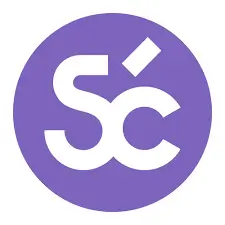As a translation professional, you’re expected to be a master of communication. While many translators are familiar with the core components of their languages, only a handful are effectively using their linguistic abilities to market their practice.
The internet has made it possible for anyone to position themselves as a translator. That in mind, the commoditization of the translation industry requires language service providers (LSPs) to rethink the ways they sell their services. They need to go beyond just providing a service and also work to highlight the value they offer.
Although marketing requires a unique way of thinking, it’s certainly not as difficult as picking up another language. Let’s take a look at a few ways you can hone your marketing skills and better communicate the value you provide to clients.
Identify and choose your primary differentiators
When you first begin developing your marketing communication strategy, you need to identify your unique selling points. A few common differentiators used by LSPs include: a range of comprehensive services, having an efficient workflow that is difficult to duplicate, offering convenient online project management solutions, and having corporate values that resonate with clients.
While many LSPs boast that they offer high-quality translations, that isn’t an effective differentiator as all work should be high-quality. Similarly, you can’t use passion, industry expertise, or commitment to meeting client needs as key differentiators because these should be a given.
Effective differentiators are clear benefits that are obvious at first glance but are difficult for competitors to mimic. For example, simplifying project management by providing a self-service portal for clients to access their content or being a specialist in a specific niche are ways you can stand out.
When you’re working to identify your competitive differentiators, it’s important to seek outside opinions, specifically from current or prospective clients, since they have a different perspective than internal teams. By asking customers about what they like and dislike about your offerings, you’ll benefit from gathering valuable feedback while also making them feel appreciated.
Define the campaign messaging
Effective content is an essential part of successful marketing campaigns. Since translation services aren’t purchased overnight, you need to ensure that you’re creating content to guide the customer through all stages of the buyer’s journey.
While marketing funnel development is a topic worthy of its own article, at a high level, you should take a holistic approach to content creation. This means creating content that adds value to the reader.
Industry reports, best practice guides, and information on how to get more from translation technology are just a few examples of content to help grow your business. Additionally, leverage your buyer personas and conduct customer interviews. This will help you decide what you should prioritize with your content development.
As a rule of thumb, in the early phases of the buyer journey, you should use a “one-to-many” approach where the content applies to a large audience. As the buyer progresses through their journey, you can progressively move towards “one-to-one” communications that are highly personalized.
Since translation services aren’t purchased overnight, you need to ensure that you’re creating content to guide the customer through all stages of the buyer’s journey.
Choose the right communication channels
After creating some content for your ideal client, you need to identify the right channels to promote it. Although it’s tempting to simply copy competitor marketing strategies, people may to perceive you as a “me-too” vendor. Additionally, if you don’t adapt your strategy to your specific goals and visions, it’s unlikely that it will succeed.
To develop an effective marketing strategy, keep the following points in mind:
Favor rented channels when possible: Use communication channels that are popular in your target industry. Trade publications and guest blogs on complimentary websites are cost-effective channels to promote your brand.
Plan a multi-channel approach: Diversify your communication methods by experimenting with multiple communication channels such as email, blogs, and paid search. As campaigns progress, evaluate the data and see what is and isn’t working.
Don’t overdo it: Ensure that you don’t overwhelm your prospects and customers with too many messages. Sometimes it’s appropriate to send messages once a week. In other cases, once a month is more appropriate. Whatever you choose, remember that quality is always more important than quantity.
Evaluate your ability to spread your message effectively: Personalization is one of the most effective ways to improve marketing message engagement rates. You can use marketing automation tools, but make sure you’re personalizing your messages and content as much as possible.
Personalization is one of the most effective ways to improve marketing message engagement rates.
Validate your campaign before executing
Once you’ve developed your campaign messaging and chosen the right channels to promote your business, it’s time for you to validate your campaign. Consider the following:
Is the campaign aligned with your business identity?
Your messaging needs to be aligned with your overall business strategy. If you specialize in one niche, stick to that sector. Don’t chase customers in other industries just because they appear to be more profitable.
Is there a clearly defined audience?
You can’t take a one-size-fits-all approach to your marketing strategy. Successful campaigns are ones that are highly targeted and tailored to the needs of specific groups.
Are you taking keywords into account?
Although search engine optimization (SEO) is a topic beyond the scope of this article, it’s an essential skill set for any content creator. Keep the main keywords in mind when writing content, but don’t obsess over them. Remember that value and readability come first.
Is the campaign well integrated with sales efforts?
Marketing and sales are two departments that should always work together. By using marketing automation tools, marketing teams can track the effectiveness of content. When a person meets a content engagement threshold, the marketing team can send the lead to sales.
Keep your strategy up-to-date and track the right metrics
Since the translation industry and customer needs are constantly evolving, marketing strategies aren’t something you “set and forget”. The most successful LSPs are the ones that take a data-driven approach to marketing. By keeping track of campaign performance information, they are able to identify and double down on the strategies that work and scale down the ones that don’t.
A few of the metrics that matter most to LSPs include:
Sales results: Compare closing ratios, total revenue by lead source, and the time it takes for sales teams to close a sale. With the right analytics systems in place, marketing teams are easily able to see the impact of their efforts on the sales cycle.
Cost of leads and return on investment (ROI): You always need to balance the cost of a marketing campaign against the volume of business it drives. Although this can take time, a couple of red flags to watch for include low message open rates and high unsubscribe request counts.
Speed to get results: You should always evaluate the amount of time it takes for you to get results. Different marketing methods have different cycle times. For example, paid search advertisements and email marketing drive rapid results. Other efforts such as search engine optimization (SEO) and print advertising have longer cycles.
Ensure you’re all involved
Although much of this article is focused on marketing campaigns and how those teams can support sales, that doesn’t mean the information isn’t relevant to other departments. In fact, the opposite is true.
In today’s crowded translation landscape, collaboration and teamwork are essential to standing ahead of the competition. All departments should act as resources to each other, rather than having teams work in isolation. For example, insights from the engineering team enable marketing professionals to craft product guides that highlight technical components that other LSPs can’t match.
In today’s crowded translation landscape, collaboration and teamwork are essential to standing ahead of the competition.
Maintain a flexible mindset
Regardless of the approach you take to develop your marketing strategies, you need to ensure that you always allow for flexibility in your strategy. The needs of internal teams and customers are always changing, as is the competitive landscape for LSPs. What works today isn’t going to work in the future.
That in mind, you can’t make strategy decisions blindly. Top-performing LSPs pay close attention to their data and iterate from there. Agility is key in today’s rapidly changing market, and it’s common to see LSPs refine campaigns every couple of weeks, if not more frequently.
Ultimately, there’s no single right or wrong way to develop an effective marketing messaging strategy. The main determinant of success is that the LSP experiments with marketing techniques and takes a data-driven approach to strategy development.
Subscribe to our newsletter


